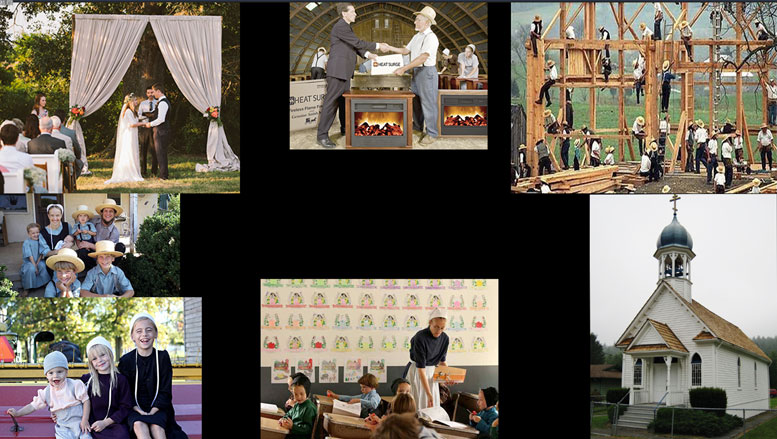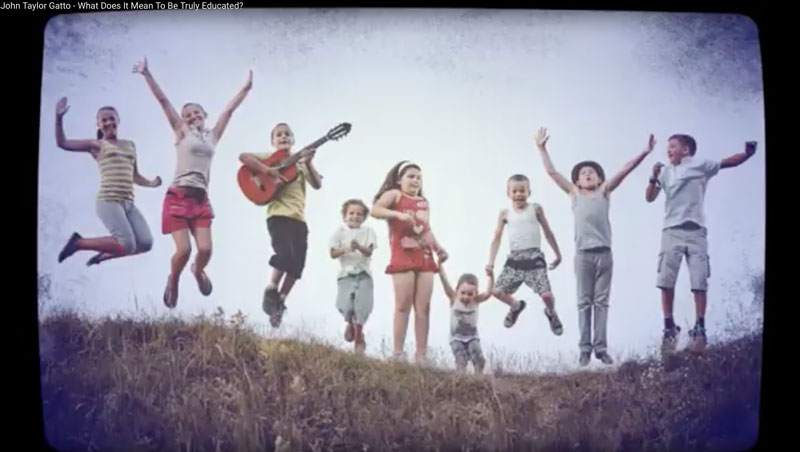That the Amish have done so well puts a realistic base of possibility under the ideal of an independent citizenry as the proper goal of schooling. — John Taylor Gatto
This article is a summary of the Amish part of J.T. Gatto’s speech: “What Does ‘Educated’ Mean?” If you’ve got 90-minutes to spare, I highly recommend downloading the transcript and listening to the entire speech.
(Note: Rather than put everything in quotes, I’d prefer to make this article more readable by keeping John’s words in standard text. I have shortened and condensed John’s speech for quick reading but these are his ideas and words. I’m the beneficiary of John’s wisdom and experience while making them more accessible to other homeschooling parents who may be on the same path.)
The Lancaster Amish
The old order Amish are a group of 320,000+ well-mannered, prosperous, law-abiding people who came to America in the early 18th century with little more than the clothes on their back. Everybody’s heard about the Amish, but very few people know the astonishing details, and here they are.
- Virtually every adult Amisher has an independent livelihood as the owner of a farm or a business.
- There’s almost no crime in the community, no violence in the community, no alcoholism in the community, no divorce in the community, no drug taking. There’s a little bit of each of those things, but it’s so microscopic that when it happens, it makes the front page of newspapers because it just doesn’t happen.
- They accept no government help with health care, with old-age assistance, or with schooling after the eighth grade, and for most of the century not even that. They were compelled by the government to accept 1 through 8 schooling.
- The success rate of Amish in small business is 95% (the rate for non-Amish business is 15%.)
- All Amish children have a chance to take an expense-paid sabbatical year away from Amish life when they arrive at the verge of adulthood. The Amish don’t want someone in the community who doesn’t want to be there… and that is a principal reason that this group has grown 3,000 percent in the 20th century.
- Almost every group member, when interviewed by outside investigators, reports total satisfaction with their lives, whether they’re children or adults.
They don’t have high school educations, they don’t have specialized training, they don’t use computers, they don’t use electricity, they don’t use automobiles, and they don’t have training in how to create a marketing plan.
And yet, the resources that have transferred over from the farm are these: an entrepreneurial spirit, a willingness to take risks, innovativeness, a strong work ethic, a cheap family labor pool, and high standards of craftsmanship.
The Amish Fought the Law and the Amish Won
You can figure out a lot of what an Amish believes in education is from the things they fought the government about and won.
When the Supreme Court ruled they had to go to school from 1st to 8th grade, they were prepared, in mass, to go to prison unless concessions were made, and they won these concessions.
- They demanded that any school be within walking distance of home, they would not allow their children to be carried on buses.
- They refused large schools where pupils are sorted into different compartments and assigned different teachers every year.
- They demanded that all school decisions had to be signed off by the parents.
- They demanded a maximum eight-month school year.
- They demanded the teachers who taught their children to be knowledgeable in, and sympathetic to, Amish values in rural ways. They refused to hand their children over to professional educators.
- They insisted their children be taught that wisdom and academic knowledge are two different things.
- They insisted that their kids have practical internships and apprenticeships supervised by the parents. They were prepared to go to jail and lose everything before they would surrender their children to any form of state indoctrination, called schooling, which would break up their families, their traditions, and their communities, and leave their children restless, trained to leap and jump but without purpose or direction not knowing where they would land.
An education to an Amish-er is being independent, living in a closed community, as a valuable neighbor, and living a godly life.
On the cusp of the 21st century where you and I are perched, it hardly seems possible for a definition of education like this to have survived and even thrived. Yet how can we explain the baffling Amish who do it their own way, in spite of expert advice, and have abundant prosperity and abundant happiness?
That the Amish have done so well puts a realistic base of possibility under the ideal of an independent citizenry as the proper goal of schooling. It’s something I hope you’ll think about.



